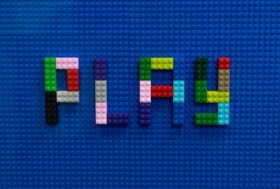Building a teacher learning culture

As Dylan Wiliam (2016) described, ‘the major contribution to improving teacher quality must come from improving the quality of teachers already working in our schools’. This is opposed to the view that we can improve academic outcomes simply through recruitment and by removing less-effective teachers. One of the main ways in which we have sought to nurture a culture of professional learning, aimed at improving the quality of education we provide, has been the creation of ‘Think Tanks’. Think Tanks have been a fundamental part of our professional learning strategy for close to a decade and involve elective residential training that takes place twice each academic year. The agenda for Think Tank is determined by the staff who choose to attend, with a clear focus on collaboration to improve teaching and learning. This has led to a distinctive culture around reading, research and continuous professional growth.
What happens at Think Tank?
Typically, the Friday evening of Think Tank will involve an interactive workshop related to a theme that is of value and interest to the broad range of teaching and associate staff who choose to attend. Often these workshops are informed by educational transactional analysis (EdTA), which is one field of application of Eric Berne’s original psychological framework (1964). Friday evening workshops at Think Tank, led by Giles Barrow, an expert transactional analysis trainer (see Barrow and Newton, 2006), have helped colleagues to think and reflect on their personal and professional habits and relationships.
On Saturday, things become a little different to the training norm, with colleagues choosing what they wish to pursue for the remainder of the morning. A number of colleagues offer to lead groups to explore theory and new ideas related to topics of interest. Other colleagues then decide which of these groups they wish to join. There is also the option to read from the range of educational books and articles that are available at Think Tank, rather than join a group. At the end of the morning, colleagues come back together to share what has been learned and discussed.
What happens after Think Tank?
At each Think Tank there is an overarching theme; however, it should be stated that the theories, ideas and actions discussed and generated at Think Tank span across the full breadth of the school’s work. Multiple ideas and actions stem from each Think Tank, rather than each event having one single and simple outcome. Although not all staff attend every Think Tank, all staff and learners benefit from the creative ideas that are generated at each event. One example of an idea that stemmed from Think Tank is the Teaching and Learning Hexagons.
Teaching and Learning Hexagons
At Think Tank in June 2017, we decided that it would be of value to co-construct a consensus of opinion about what elements of teaching have the most impact on learning. A group of colleagues created an initial draft of what this consensus may look like. The elements included were based on the personal experience of teachers, the mission of the school and educational reading. Colleagues brought these ideas back to school the following week and, after many rounds of drafts and critique, we finally ended up with the Matthew Moss Teaching and Learning Hexagons you can see in Figure 1.

The central hexagon relates to the qualities that we seek to develop in young people, which are described in our CHANGE mission (see Figure 2).

The second layer of hexagons in Figure 1 (light teal colour) refer to the fundamentals of teaching and learning that are aspects of most lessons. Finally, the outer hexagons (dark teal colour) are the elements of teaching that develop over time once the fundamental elements are consistently in place. To showcase each of these elements in action, we worked with Graham Kay, a skilled educational filmmaker, to create a series of Teaching and Learning films, which are available on our school website (mmhs.co.uk/teaching-and-learning).
The creation of the hexagons, and the accompanying films, created a genuine sense of enthusiasm and buzz around teaching and learning. The co-constructed hexagons provided clarity for teachers without creating a prescriptive, rigid structure that reduces their creativity. The hexagons summarise what we believe are the essential elements of teaching, whilst leaving teachers free to experiment with specific approaches that enact these elements.
Learning from success and failure
There is a firm belief across the school that we learn through trying something new and then reflecting on the successes and failures of this experience. We seek to create opportunities for the deliberate practice required to develop genuine teaching expertise. In the words of Dylan Wiliam (2012): ‘Every teacher fails on a daily basis. If you are not failing you are just not paying attention. Because we fail all the time.’ I believe that the beauty and frustration of teaching is that we never completely crack it! There is always more to learn.
Where are we now?
This healthy culture of professional learning has led to thoughtful and responsive teaching, enabling young people to develop strong academic understanding as part of a holistic education that cultivates the independence and agency required to thrive in the future. Of course, it is not perfect; teaching never is. However, there is little doubt that the improvements we have seen in recent years have been heavily influenced by encouraging staff to see professional learning and growth as an essential part of what we do each day, not an optional extra.
References
Barrow J and Newton T (2006) Walking the Talk. London: David Fulton Books, Routledge.
Berne E (1964) Games People Play. New York: Grove Press.
Wiliam D (2012) How do we prepare our students for a world we cannot possibly imagine? Speech delivered at the SSAT National Conference, Liverpool, 4–5 December 2012.
Wiliam D (2016) Leadership for Teacher Learning. Florida: Learning Sciences International.










